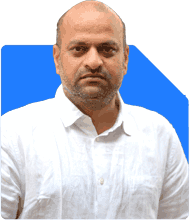Should I Add a Critical Illness Rider to My Insurance?

I’m Kavya from Varanasi. I am 33 with one daughter, aged 5. My husband and I both have health and life insurance policies. We’re considering adding a critical illness rider to our insurance. Is this a good idea for additional protection?
Adding a critical illness (CI) rider to your existing health and life insurance policies can be a valuable way to enhance your financial protection. Here are some key points to consider:
What is a Critical Illness Rider?
A critical illness rider is an add-on to your existing insurance policy that provides a lump-sum payment if you are diagnosed with one of the specified critical illnesses covered by the policy. Common illnesses covered include cancer, heart attack, stroke, kidney failure, and major organ transplants, among others.
Benefits of Adding a CI Rider:
1. Financial Support During Recovery:
• Medical Expenses: Helps cover treatments that might not be fully covered by your regular health insurance.
• Living Expenses: Provides funds to manage daily expenses if you're unable to work during recovery.
2. Flexibility:
• The lump sum can be used as you see fit, whether for medical bills, mortgage payments, or other financial obligations.
3. Peace of Mind:
• Offers additional security knowing that you have extra coverage in case of a serious illness.
Considerations Before Adding a CI Rider:
1. Coverage and Definitions:
• Illness List: Ensure the rider covers a broad range of illnesses relevant to your age and family medical history.
• Definitions and Criteria: Understand the specific definitions and diagnostic criteria for each covered illness.
2. Cost:
• Premium Increases: Adding a CI rider will increase your premium. Evaluate whether the additional cost fits within your budget.
• Affordability: Consider how the increased premiums affect your overall financial plan.
3. Exclusions and Limitations:
• Pre-existing Conditions: Check if any existing health conditions might exclude you from coverage.
• Survival Period: Some policies require you to survive a certain period after diagnosis to receive the benefit.
4. Policy Terms:
• Claim Process: Understand the process for filing a claim and the documentation required.
• Renewability: Ensure the rider remains in force for as long as you need it, without excessive increases in premiums.
5. Existing Coverage:
• Overlap: Review your current health and life insurance policies to identify any overlapping benefits.
• Gap Analysis: Determine if there are gaps in coverage that the CI rider would effectively fill.
Personal Considerations:
• Health Status: Both you and your husband’s current health status and family medical history can influence the necessity of a CI rider.
• Financial Obligations: Consider your financial responsibilities, such as your daughter's education, mortgage, or other long-term commitments.
• Risk Tolerance: Assess your comfort level with the potential financial risks associated with critical illnesses.
Next Steps:
1. Evaluate Your Needs:
• Assess your current financial situation, obligations, and the level of protection you desire.
2. Compare Policies:
• Look at different insurers and the specific terms of their CI riders to find the best fit for your needs.
3. Consult a Professional:
• Speak with a certified financial advisor or insurance agent who can provide personalized advice based on your circumstances.
Adding a critical illness rider can offer valuable protection and peace of mind, but it's essential to carefully evaluate how it fits into your overall financial plan. By considering the factors above and consulting with a professional, you can make an informed decision that best suits your family's needs.
You may like to see similar questions and answers below
Sanjib Jha | Answer |Ask -Follow
Insurance Expert - Answered on Jun 21, 2022
Milind Vadjikar | Answer |Ask -Follow
Insurance, Stocks, MF, PF Expert - Answered on Oct 23, 2024
Ramalingam Kalirajan |10881 Answers |Ask -Follow
Mutual Funds, Financial Planning Expert - Answered on Jun 02, 2025
Purshotam Lal | Answer |Ask -Follow
Financial Planner, MF and Insurance Expert - Answered on Sep 18, 2025
Nayagam P P |10854 Answers |Ask -Follow
Career Counsellor - Answered on Dec 14, 2025
Radheshyam Zanwar |6744 Answers |Ask -Follow
MHT-CET, IIT-JEE, NEET-UG Expert - Answered on Dec 14, 2025
Radheshyam Zanwar |6744 Answers |Ask -Follow
MHT-CET, IIT-JEE, NEET-UG Expert - Answered on Dec 14, 2025
Dr Dipankar Dutta |1840 Answers |Ask -Follow
Tech Careers and Skill Development Expert - Answered on Dec 14, 2025
Dr Dipankar Dutta |1840 Answers |Ask -Follow
Tech Careers and Skill Development Expert - Answered on Dec 13, 2025
Dr Dipankar Dutta |1840 Answers |Ask -Follow
Tech Careers and Skill Development Expert - Answered on Dec 13, 2025
Mayank Chandel |2575 Answers |Ask -Follow
IIT-JEE, NEET-UG, SAT, CLAT, CA, CS Exam Expert - Answered on Dec 13, 2025
Radheshyam Zanwar |6744 Answers |Ask -Follow
MHT-CET, IIT-JEE, NEET-UG Expert - Answered on Dec 13, 2025
Mayank Chandel |2575 Answers |Ask -Follow
IIT-JEE, NEET-UG, SAT, CLAT, CA, CS Exam Expert - Answered on Dec 13, 2025
Mayank Chandel |2575 Answers |Ask -Follow
IIT-JEE, NEET-UG, SAT, CLAT, CA, CS Exam Expert - Answered on Dec 13, 2025

























